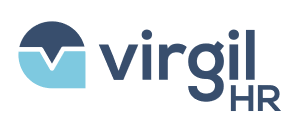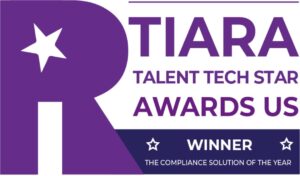Diversity, equity, and inclusion have been top of mind for many human resources professionals. In recent years, in particular, they have been given the important task of navigating the intersection of the business, political, and moral landscapes.
With so much at stake, how can human resources departments create and manage DEI initiatives that benefit everyone and positively impact workplace culture? In simple terms, a successful DEI program involves asking questions to find areas of strength and weakness, implementing initiatives to fix existing problems, and tracking success using key performance indicators.
If you’re interested in learning more, check out this detailed guide on how DEI can improve your organization as a whole.
What Does DEI Refer To?
DEI is an acronym for diversity, equity, and inclusion initiatives in the workplace. Many people use this term to refer to HR departments’ hiring of people from underrepresented groups. However, DEI encompasses far more than just your hiring practices. Here is a breakdown of the critical components of a DEI initiative and what each one can bring to your organization.
Diversity
Diversity is all about maintaining a workforce that is representative of a wide range of human differences. From race to gender to physical ability, veteran status, and cultural and socioeconomic background, your human resources team should consider what makes people unique. Then, it is their job to ensure that your company embraces these differences in its hiring practices.
Equity
In human resources, equity refers to fairness. All practices, policies, and programs should be designed to be as impartial as possible and do what is necessary to foster equal outcomes for every stakeholder. You must make sure that what you do does not have a disproportionately negative effect on any one group of people.
Inclusion
Inclusion refers to how your company’s human resources practices make sure that employees and stakeholders feel a sense of belonging in the workplace. Everyone in your organization should feel well-supported by your policies and be comfortable being authentic at work.
How Can HR Teams Practice DEI?
Practicing DEI requires human resources teams to carefully balance stakeholder perspectives with a keen understanding of the benefits diversity, equity, and inclusion initiatives bring to the company. Following these best practices can help you accomplish that goal:
- Don’t assume you know where your issues lie. Instead, administer a workforce diversity survey to gather data and demonstrate your commitment to listening.
- Make sure to ask qualitative questions that go beyond demographic data. This is how you learn whether your workplace fosters a sense of belonging and fairness.
- Establish goals and success metrics. What problems need to be addressed? What key performance indicators will help you measure benchmarks?
- Share your survey and program results with your employees, highlighting areas of success and issues that still need considerable work.
- Embed your DEI initiative into every aspect of the employee experience, from talent acquisition to employee engagement and performance reviews.
- Survey your workforce continually to assess and address new and ongoing issues.
While addressing DEI in the workplace can be daunting, these best practices can help ensure you implement your initiatives in a way that benefits all stakeholders.
The Importance of DEI in the Workplace
Diversity, equity, and inclusion are far more than just hot-button political issues. In fact, these initiatives have many benefits for stakeholders all across the organization. Here are five reasons why your HR department should choose to pursue DEI programs.
Increased Innovation
Research shows that workplace diversity is a significant driver of organizational innovation. For instance, a recent study revealed that companies whose leaders exhibit inherent and acquired diversity traits are 45% more likely to report market share growth and up to 70% more likely to report moving into new markets.
A Different Perspective
The phrase “two heads are better than one” encapsulates one of the most significant benefits of workplace diversity, equity, and inclusion. Having different perspectives and cultural viewpoints helps your company develop better, faster, and more creative decision-making processes.
Larger Talent Pool
DEI issues matter to candidates from every walk of life. In a generation that values authenticity over just about everything else, survey data shows that three-quarters of job seekers evaluate offers based on the diversity of your leadership and workforce and whether they’ll feel included at work.
Improved Performance
McKinsey & Company’s most recent diversity and inclusion survey indicates that companies in the top quartile for gender and ethnic diversity on leadership teams outperformed businesses in the fourth quartile in terms of profitability by 25% and 36%, respectively. This shows that diversity is a strength that can help your company win in competitive markets.
Reduced Employee Attrition
When employees do not feel a sense of belonging or feel that the workplace is hostile to their core identity, they are more likely to contemplate leaving for a place that will be more welcoming. Consequently, DEI initiatives can benefit companies by helping to foster a sense of fairness and inclusion for everyone.
10 Ways to Measure Diversity, Equity, and Inclusion
The old saying is true: you cannot improve what you don’t measure. Though much of your diversity, equity, and inclusion data will likely be qualitative, don’t neglect the importance of tracking and measuring the success of your initiative to get a sense of how you’re doing as a company. A few KPIs you might track include:
- Percent of diverse hires
- Representation (across the organization)
- Attrition (segmented by demographic subset)
- Employee experience
- Employee Resource Group participation
- Supplier diversity
- Accessibility
- Inclusion or sense of belonging
- Leadership or executive position diversity
- Employee Net Promoter Scores (eNPS)
As you track your results, ensure that you note any trends, improvement areas, and issues that may need a different or more creative approach.
DEI Initiatives Benefit All Organizational Stakeholders
Undoubtedly, DEI initiatives have the potential to bring a positive return on investment in all aspects of your business. However, they can only have the desired effect when all stakeholders are committed to best practices.
As your department works to weave a sense of fairness and belonging into the fabric of the company, ensure that you are listening to all perspectives and continually striving to do what is necessary to ensure the employee experience accurately reflects your company’s values.






